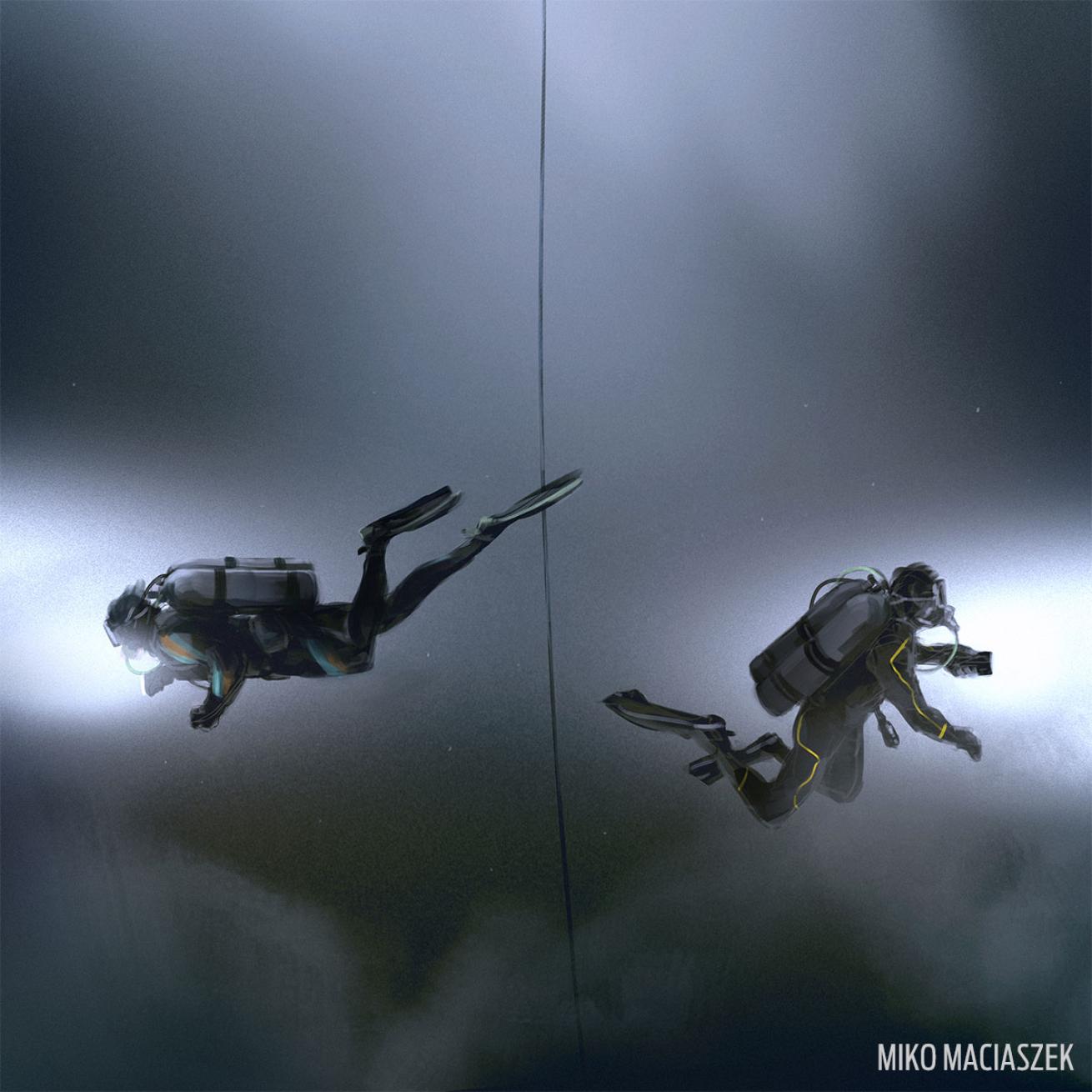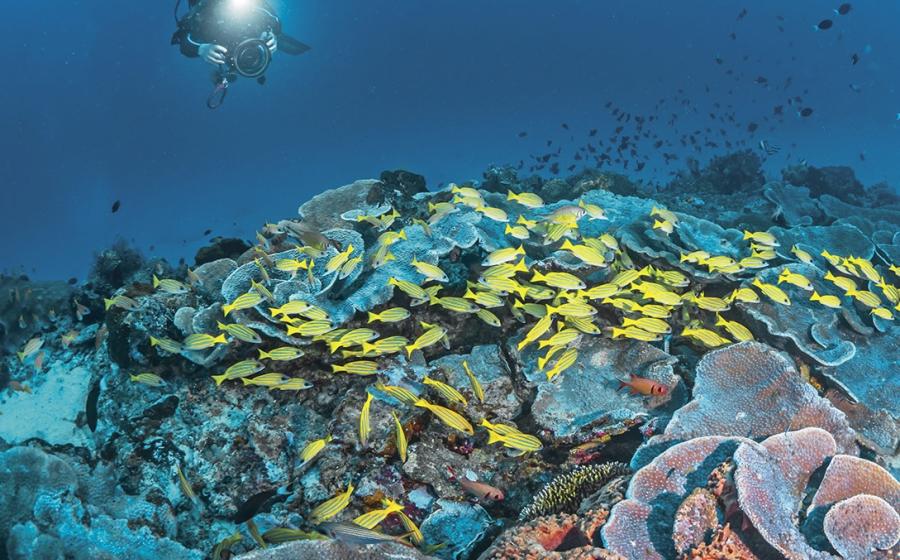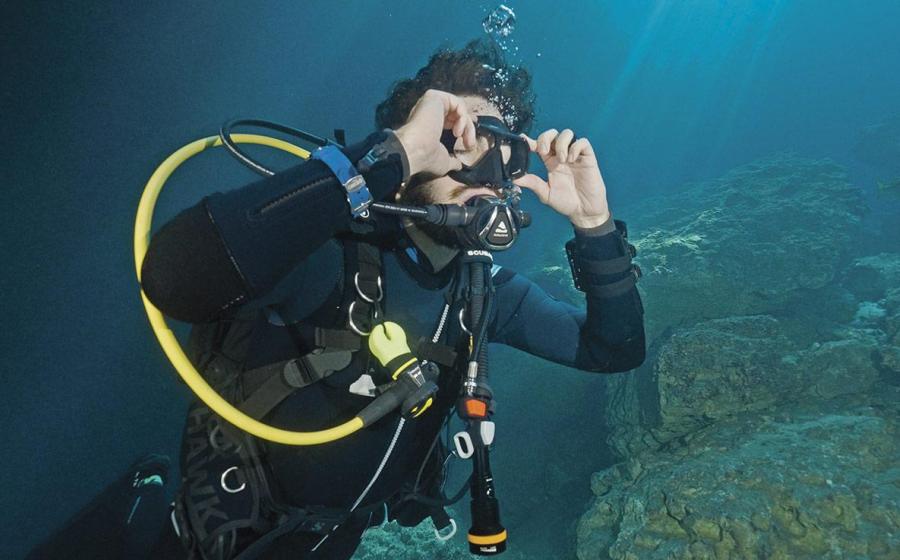Two Divers Attempt To Set Personal Depth Record When Nitrogen Narcosis Strikes
OUT OF THEIR MINDS
Greg and Nathan had one goal for the dive: to set a personal depth record. There wasn’t much to see at the depth they were diving, and it was cold, but that didn’t matter. They wanted to see 230 feet on their dive-computer readouts.

Miko MaciaszekGreg and Nathan were so consumed by the need to hit their goal, they never stopped to consider the pitfalls of the dive.
As he crossed 200 feet, Greg was excited and happy. He wasn’t sure where Nathan was, but he assumed his buddy was right behind him. It didn’t matter. He couldn’t believe he was about to make it, and all he could think about was telling his friends post-dive.
THE DIVER
Greg was 18 years old. He had been certified for only one year, but he had been active during that year. He had already logged more than 75 dives and had completed his rescue-diver certification. He did not hold any technical diver ratings. He was in good health.
THE DIVE
Greg and Nathan showed up at the lake near their home with only one thing on their mind. They were going to set a new personal depth record, and nothing was going to stop them. Conditions at the lake were fair, with mild air temperatures and calm winds. Recent rains had lowered the visibility in the lake, but both divers felt it wouldn’t be a problem. At the depth they were planning to reach, it would be dark and cold. They were already planning to use dive lights, so they reasoned visibility wasn’t a concern.
The lake was a reservoir used for flood control. At its deepest point, it was more than 300 feet deep. The divers believed they would hit the bottom at 230 feet where they were planning to dive.
Although neither diver had any technical-diving training, a fellow diver set them up with twin air tanks. They were planning to follow their dive computers for the decompression stops they knew they would have to make on the way back from 230 feet. Both young men had recently completed dives to 200 feet, so they saw this dive as the next step in their personal evolution. They were making the dive breathing air.
Greg and Nathan entered the water from the shore and swam a float out 50 yards from the beach area. They dropped 250 feet of rope with a lead weight tied to the bottom to use as a descent line. They planned to follow it all the way to the bottom, but neither diver wanted to hold onto the line — they wanted to make a free descent, using the rope only as a reference.
As the pair began their descent, they realized the reduced visibility was going to make it hard to stay together, even with their dive lights. It never occurred to either of them to maintain contact with the line.
THE ACCIDENT
When the buddy team reached 160 feet, both divers were feeling the effects of nitrogen narcosis. They felt disoriented and confused. In the murky water, they became separated from the descent line and each other.
Nathan realized he wasn’t thinking straight. He looked around, but he couldn’t find Greg anywhere. He couldn’t see his buddy’s light through the murk. At that point, he decided to follow his training and abort the dive to reconnect with Greg. On his ascent, Nathan completed 20 minutes of decompression before he surfaced.
Nathan waited a few minutes for Greg to come up. He assumed his friend had stayed with the line and made it to 230 feet. He knew Greg wouldn’t hang around at depth, though, so he guessed Greg would make it to the surface in a few minutes. He knew that if Greg had made it to the bottom, he would have to decompress longer. Finally, Nathan got worried that Greg wasn’t coming to the surface, so he called for help. It took more than an hour for the local search team to get to the site and get ready for the dive. The depth and reduced visibility made the search especially dangerous and difficult. It took them five days to recover Greg’s body.
The cause of death was ruled as drowning, secondary to nitrogen narcosis.
ANALYSIS
Two times in my life, I have been to 165 feet breathing air. Both times were in a hyperbaric chamber. The first time was purely for the experience while taking chamber training. The density of the air caused everyone’s voices to sound more like Donald Duck’s than their own. When the first person spoke, everyone broke out into laughter. It was funny, of course, but the nitrogen narcosis made it even more so. Some people in that situation have nearly uncontrollable, hysterical laughter.
The second time was on a treatment run caring for an injured diver. I was performing CPR compressions. The nitrogen narcosis was not funny that time. I remember becoming so fixated that all I could see was my own two hands on the diver’s chest and sweat dripping off my nose onto the back of my hands. It was a classic instance of tunnel vision.
Nitrogen narcosis is no joke. It can be deadly. According to the NOAA Diving Manual, even though it is normally portrayed as such, “nitrogen narcosis is not always rapturous or intoxicating.” It can be “unpleasant or frightening, particularly in limited visibility and cold water.” Both of those conditions were present for Greg and Nathan. The manual goes on to say that nitrogen narcosis “impairs intellectual capacities, short-term memory, time perception, orientation, judgment, reasoning, and the ability to perform mental functions.”
The effective use of air for diving is about 150 feet of seawater, and NOAA limits air to a maximum of 170 feet of seawater. The only way to reduce the effects of nitrogen narcosis during a dive is to ascend. You don’t have to return to the surface, but you do have to go shallower. Reducing the ambient pressure on your body will reduce the narcosis. Symptoms will disappear almost immediately, and there is no hangover, but some people might have memory loss from the narcotic period.
The only way to avoid nitrogen narcosis on an especially deep dive is by breathing a gas mixture with reduced nitrogen content. This is typically in the form of trimix: a blend of oxygen, nitrogen and helium. Helium causes minimal narcosis. Diving with trimix requires special training and preparation along with equipment.
An underlying problem with this dive was the single-minded focus on setting a personal depth record. Greg and Nathan were so consumed by the need to hit their goal, they never stopped to consider the pitfalls of the dive. Diving to 200, 300 or 400 feet can be done safely, but it takes a focus on safety and planning, not on a number. Simply deciding to hit a personal depth record without understanding the pressure and physics involved is a doorway to disaster. Water can be a very unforgiving environment when not treated with respect. In this case, the young men should have set their goal and discussed that goal with their dive instructor to find out the training and equipment that is required to make such a dive.
LESSONS FOR LIFE
1 ) DON'T LET A GOAL CLOUD YOUR JUDGMENT. If conditions are not right for the dive, abort and try again later. There is nothing underwater worth dying for.
2 ) SEEK TRAINING BEFORE MAKING MORE-ADVANCED DIVES. The recreational-diving depth limit is 130 feet for several reasons. Diving beyond that limit requires special preparation.
3 ) BE AWARE OF THE FEELINGS OF NITROGEN NARCOSIS. Mild impairment or euphoria can affect some people at 100 feet or shallower, not just during very deep dives. If you feel impaired on a dive due to the pressure, ascend to shallower depths for the remainder of the dive.
Eric Douglas co-authored the book Scuba Diving Safety, and has written a series of adventure novels, children’s books, and short stories — all with an ocean and scuba diving theme. Check out his website and follow him on Facebook.
About Lessons for Life
We're often asked if the Lessons for Life columns are based on real-life events. The answer is yes, they are. The names and locations have been removed or altered to protect identities, but these stories are meant to teach you who to handle a scuba diving emergency by learning from the mistakes other divers have made. Author Eric Douglas takes creative license on occasion for the story, but the events and, often, the communication between divers before the accident are entirely based on incident reports.










